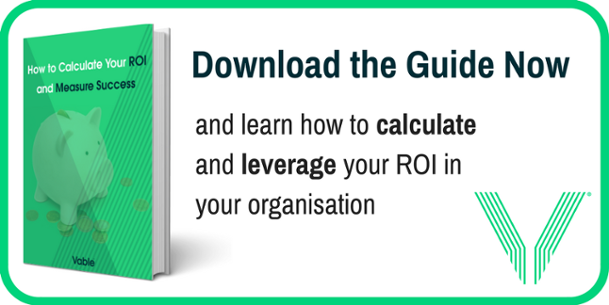Share this
Are librarians and information professionals becoming data analysts?
by Clare Brown on August 24, 2016
One of the most discussed trends is that of data - big data, small data, data analytics, predictive data. It’s all relevant, it’s all important and it should be on all our radars. Data is constantly growing and, as it does, we are finding new ways to harness it and fulfill our potential.
But first a point of clarification. Is it data or information - what is the difference?
Data are simply facts or figures — bits of information, but not information itself. When data are processed, interpreted, organized, structured or presented so as to make them meaningful or useful, they are called information. Information provides context for data.
Within the context of this blogpost, I want to examine two significant themes which have emerged. The first is how we can best use data to improve our current awareness service; and secondly, how you can ensure your current awareness service includis more data, and different types of data.

Using data to improve your current awareness service
Email technology means we have the ability to track email newsletter opens and clicks and is as useful for information professionals, as business development specialists. We can see on a recipient by recipient basis, who is opening our emails, when they are opening them and whether they are clicking through to the links that we send them. We need to work out how to use this data to our advantage.
Your email open rate
Your open rate - the percentage of recipients opening your emails - enables you to assess two factors - the convenience of the time of day that you are sending your emails, and the appealability of the subject line. If looking to improve your open rate, it is recommended to change only one factor at the time, e.g. the time of day or the style of the subject line - changing both at the same time will render your results inaccurate.
Don’t be afraid to experiment, for example, you may notice that your end users are more likely to open your newsletters at 9am as opposed to 8am so it may well be better to schedule your alerts to go out at that time as it will mean they always contain the most up to date information possible.
Your email click rate
Looking at your click rate (the percentage of those who click through to your links having opened your email) will enable you to determine the relevancy of the content you are sending to your end users. If this is consistently lower than you would like it then it may be that you need to spend some time meeting with your end users, sitting in on their own meetings and so forth in order to better determine the data they need.
Analysing this email data supports you delivering the best possible content to your users on a consistent basis. You can then use the information extrapolated from this data at a later date when it comes to demonstrating the need for your library budget by showing the number of users who are engaging with your service and how they are using it.
Including more data through your current awareness service
We are in the midst of an infodemic which presents both a threat and an opportunity. We have to search smarter to provide end users with that extra titbit of knowledge to give them the competitive edge. It's a challenge when it comes to managing and harnessing the potential power of such data. Though, if anyone can do it, it’s the librarian.
“There is so much information available, and it takes a trained researcher to sift through the dross to find the gold. [...]. As I tell my students, it only takes a few bucks and a little determination to become a content provider on the Internet. Many users, even well-educated lawyers, don’t always think to check the information they find on the Internet for currency, accuracy, and authenticity.”
Joyce Manna Janto, quoted from Michigan Law (2)
The quote at the start states that without sufficient surrounding context, quantitative data is rendered meaningless. Whilst numerical data brings with it an inherent sense of accuracy and reliability, if it serves no clear purpose to the discussion at hand it serves no use at all. As a trusted provider of information, the librarian is able to deliver both accurate data, and the relevant contextual information to surround it.
The future of data is here
Speaking at AALL in Chicago in 2016, Jean O’Grady cited big data’s complexity as one of its most important characteristics. The complexity of big data, Jean explained, means that data from multiple sources must be normalised, cleaned, matched and put into hierarchies and relationships to be analysed and assessed - a task that falls to the librarian.
An example of this is the current habit of lawyers to send an email around the firm to gather their coworkers’ experience of appearing in-front of certain judges (4) - insights that could be invaluable in making or breaking a case. New developments in technology mean that these are now able to be managed through analytics platforms, opening up a new space in which to manage information and collective knowledge.
This is predictive analytics in action. Similarly, law firms’ clients may also require data driven analysis through their need to understand how laws or contracts will impact upon their business, e.g. a bank wanting to know its financial risk based on its contractual obligations (5).
Machine learning is helping with these predictions. You can see such innovation in action by looking at companies such as Fiscal Note, who are using legislative and regulatory analytics in order to predict what laws are going to pass in the United States. As stated in March 2020 by Femi Cadmus,
Looking ahead, the integration of technology in the work of law librarians will only increase. Over 90% of government law library employees say that artificial intelligence or machine learning has already affected their workflow by automating routine tasks. Over a quarter of law firms or corporations now have at least one active artificial intelligence initiative. Of those, more than half involve the library. It is therefore not surprising that the skills law library employees plan to develop in the next two years include artificial intelligence or machine learning, data analytics, and blockchain (in that order).
As always, the skills of librarians are going to be required to assess these new and varying forms of data for accuracy and relevancy, as well as adding context to provide wider meaning to their end users.
Share this
- April 2024 (1)
- March 2024 (3)
- February 2024 (4)
- January 2024 (2)
- December 2023 (1)
- November 2023 (2)
- October 2023 (2)
- September 2023 (1)
- August 2023 (3)
- July 2023 (5)
- June 2023 (2)
- May 2023 (2)
- April 2023 (4)
- March 2023 (1)
- February 2023 (1)
- January 2023 (2)
- November 2022 (2)
- September 2022 (2)
- August 2022 (2)
- July 2022 (1)
- June 2022 (1)
- May 2022 (2)
- April 2022 (3)
- March 2022 (1)
- February 2022 (2)
- January 2022 (1)
- December 2021 (2)
- November 2021 (2)
- October 2021 (2)
- September 2021 (2)
- August 2021 (2)
- July 2021 (2)
- June 2021 (2)
- May 2021 (1)
- April 2021 (2)
- March 2021 (1)
- February 2021 (3)
- January 2021 (2)
- November 2020 (3)
- October 2020 (1)
- August 2020 (2)
- July 2020 (4)
- June 2020 (1)
- May 2020 (1)
- April 2020 (2)
- March 2020 (2)
- February 2020 (3)
- January 2020 (1)
- December 2019 (2)
- November 2019 (1)
- October 2019 (1)
- September 2019 (1)
- August 2019 (3)
- July 2019 (3)
- June 2019 (3)
- May 2019 (2)
- April 2019 (1)
- March 2019 (2)
- February 2019 (3)
- January 2019 (3)
- December 2018 (1)
- November 2018 (2)
- October 2018 (2)
- September 2018 (1)
- August 2018 (2)
- July 2018 (2)
- June 2018 (2)
- May 2018 (3)
- April 2018 (3)
- March 2018 (1)
- February 2018 (3)
- January 2018 (1)
- November 2017 (1)
- October 2017 (1)
- July 2017 (1)
- April 2017 (2)
- March 2017 (3)
- February 2017 (1)
- January 2017 (1)
- November 2016 (2)
- October 2016 (1)
- September 2016 (1)
- August 2016 (2)
- June 2016 (1)
- May 2016 (1)
- April 2016 (1)

